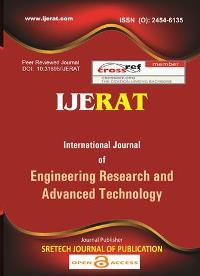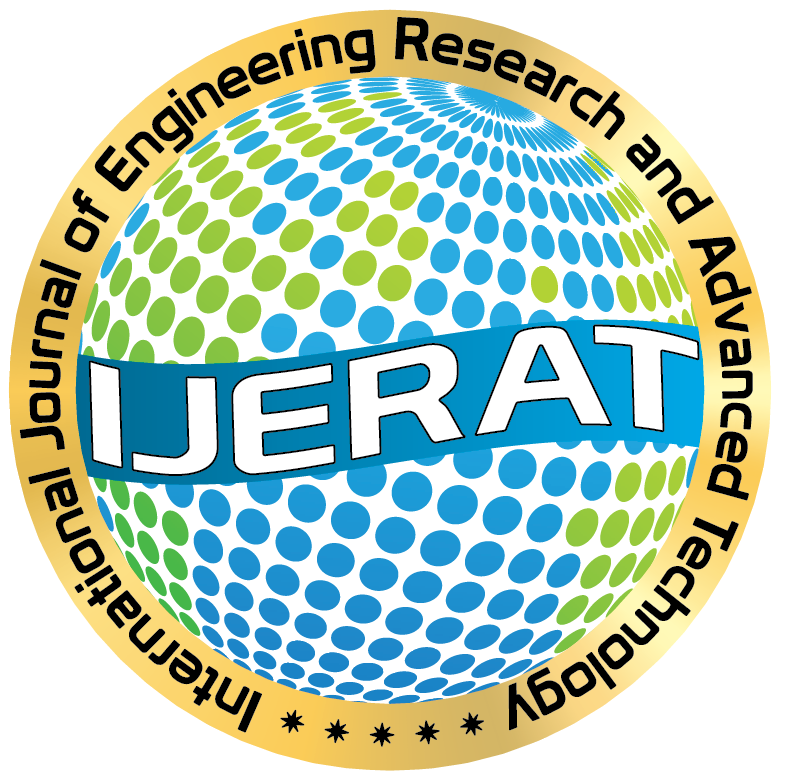Higher Order Semi - Analytical Method: Analysis of Up & Down - Milling Stability of High Speed Machining
DOI:
https://doi.org/10.31695/IJERAT.2021.3721Keywords:
High Speed Machining, Milling Stability, Chatter, Semi-Analytical MethodAbstract
This work presents a dynamic stability analysis of the general high-speed milling process by a higher-order semi-analytical method. The first-order full-discretization method (1st FDM) and second-order full-discretization method (2nd FDM) are presented. These methods are based on the direct integration scheme. The governing mathematical model applied is the delay-differential equation with single time-periodic delay taking regenerative effect into account. The stability lobes diagrams are presented for a single degree of freedom mechanical model and two degrees of freedom mechanical model. Up-milling and down-milling stability charts are presented for various radial immersion ratios in order to compare the accuracy of up-and down-milling. It is demonstrated that for full-immersion down-milling and up-milling stability lobes diagrams are the same approximatively but in other cases down- milling is more accurate than up-milling both for a single degree of freedom and two degrees of freedom. the computational time of calculation of eigenvalue is also variable for the different computational parameters. The rate of convergence for half immersion and low immersion is presented for variable parameters.
References
Tobias, S. A., & Fishwick, W. (1958). Theory of regenerative machine tool chatter. The engineer, 205(7), 199-203.
Tlusty, J. (1963). The stability of the machine tool against self-excited vibration in machining. Proc. Int. Res. In Production Engineering, Pittsburgh, ASME, 465.
Zhang, X. J., Xiong, C. H., Ding, Y., Feng, M. J., & Xiong, Y. L. (2012). Milling stability analysis simultaneously considering the structural model coupling effect and regenerative effect. International Journal of Machine Tools and Manufacture, 53(1), 127-140.
Munoa, J., Zatarain, M., Dombóvári, Z., & Yang, Y. (2009, May). Effect of mode interaction on the stability of milling processes. In 12th CIRP Conference on Modelling of Machining Operations, San Sebastian, Spain (pp. 927-933).
Tlusty, J., & Ismail, F. (1981). Basic non-linearity in machining chatter. CIRP Annals, 30(1), 299-304.
Altintaş, Y., & Budak, E. (1995). Analytical prediction of stability lobes in milling. CIRP Annals, 44(1), 357-362.
Budak, E., & Altintas, Y. (1998). Analytical prediction of chatter stability in milling—part I: general formulation.
Merdol, S. D., & Altintas, Y. (2004). Multifrequency solution of chatter stability for low immersion milling. J. Manuf. Sci. Eng., 126(3), 459-466.
Merdol, S. D., & Altintas, Y. (2004). Multifrequency solution of chatter stability for low immersion milling. J. Manuf. Sci. Eng., 126(3), 459-466.
Butcher, E. A., Ma, H., Bueler, E., Averina, V., & Szabo, Z. (2004). Stability of linear time‐periodic delay‐differential equations via Chebyshev polynomials. International Journal for Numerical Methods in Engineering, 59(7), 895-922.
Butcher, E. A., Ma, H., Bueler, E., Averina, V., & Szabo, Z. (2004). Stability of linear time‐periodic delay‐differential equations via Chebyshev polynomials. International Journal for Numerical Methods in Engineering, 59(7), 895-922.
Insperger, T., & Stépán, G. (2002). Semi‐discretization method for delayed systems. International Journal for numerical methods in engineering, 55(5), 503-518.
Elbeyli, O., & Sun, J. Q. (2004). On the semi-discretization method for feedback control design of linear systems with time delay. Journal of Sound and Vibration, 1(273), 429-440.
Insperger, T., Stépán, G., & Turi, J. (2008). On the higher-order semi-discretizations for periodic delayed systems. Journal of Sound and Vibration, 313(1-2), 334-341.
Insperger, T., & Stépán, G. (2004). Updated semi‐discretization method for periodic delay‐differential equations with discrete delay. International journal for numerical methods in engineering, 61(1), 117-141.
Henninger, C., & Eberhard, P. (2008). Improving the computational efficiency and accuracy of the semi-discretization method for periodic delay-differential equations. European Journal of Mechanics-A/Solids, 27(6), 975-985.
Ahmadi, K., & Ismail, F. (2012). Stability lobes in milling including process damping and utilizing multi-frequency and semi-discretization methods. International Journal of Machine Tools and Manufacture, 54, 46-54.
Wang, M., Gao, L., & Zheng, Y. (2014). Prediction of regenerative chatter in the high-speed vertical milling of thin-walled workpiece made of titanium alloy. The International Journal of Advanced Manufacturing Technology, 72(5-8), 707-716.
Ding, Y., Zhu, L., Zhang, X., & Ding, H. (2010). A full-discretization method for prediction of milling stability. International Journal of Machine Tools and Manufacture, 50(5), 502-509.
Ding, Y., Zhu, L., Zhang, X., & Ding, H. (2010). Second-order full-discretization method for milling stability prediction. International Journal of Machine Tools and Manufacture, 50(10), 926-932.
Quo, Q., Sun, Y., & Jiang, Y. (2012). On the accurate calculation of milling stability limits using the third-order full-discretization method. International Journal of Machine Tools and Manufacture, 62, 61-66.
Ozoegwu, C. G., & Omenyi, S. N. (2016). Third-order least squares modeling of milling state term for improved computation of stability boundaries. Production & Manufacturing Research, 4(1), 46-64.
Ozoegwu, C. G., Omenyi, S. N., & Ofochebe, S. M. (2015). Hyper-third order full-discretization methods in milling stability prediction. International Journal of Machine Tools and Manufacture, 92, 1-9.
Insperger, T. (2010). Full-discretization and semi-discretization for milling stability prediction: some comments. International Journal of Machine Tools and Manufacture, 50(7), 658-662.
Insperger, T. (2010). Full-discretization and semi-discretization for milling stability prediction: some comments. International Journal of Machine Tools and Manufacture, 50(7), 658-662.
Niu, J., Ding, Y., Zhu, L., & Ding, H. (2014). Runge–Kutta methods for a semi-analytical prediction of milling stability. Nonlinear Dynamics, 76(1), 289-304.
Qin, C., Tao, J., & Liu, C. (2019). A novel stability prediction method for milling operations using the holistic-interpolation scheme. Proceedings of the Institution of Mechanical Engineers, Part C: Journal of Mechanical Engineering Science, 233(13), 4463-4475.
Insperger, T., Mann, B. P., Stépán, G., & Bayly, P. V. (2003). Stability of up-milling and down-milling, part 1: alternative analytical methods. International Journal of Machine tools and Manufacture, 43(1), 25-34.
Mann, B. P., Insperger, T., Bayly, P. V., & Stépán, G. (2003). Stability of up-milling and down-milling, part 2: experimental verification. International Journal of Machine Tools and Manufacture, 43(1), 35-40.
Insperger, T., & Stépán, G. (2004). Vibration frequencies in high-speed milling processes or a positive answer to Davies, Pratt, Dutterer, and Burns. J. Manuf. Sci. Eng., 126(3), 481-487.
Insperger, T., & Stépán, G. (2000). Stability of the milling process. Periodica polytechnic mechanical engineering, 44(1), 47-57.
Ozoegwu, C. G. (2014). The least-squares approximated stability boundaries of the milling process. International Journal of Machine Tools and Manufacture, 79, 24-30.
Bayly, P. V., Mann, B. P., Schmitz, T. L., Peters, D. A., Stepan, G., & Insperger, T. (2002, January). Effects of radial immersion and cutting direction on chatter instability in end-milling. In ASME International Mechanical Engineering Congress and Exposition (Vol. 3641, pp. 351-363).
Downloads
Published
Issue
Section
License
Copyright (c) 2021 Mohamadou Balarabe, Beda Tibi, Nzie Wolfgang, Pehma Elkana

This work is licensed under a Creative Commons Attribution 4.0 International License.









